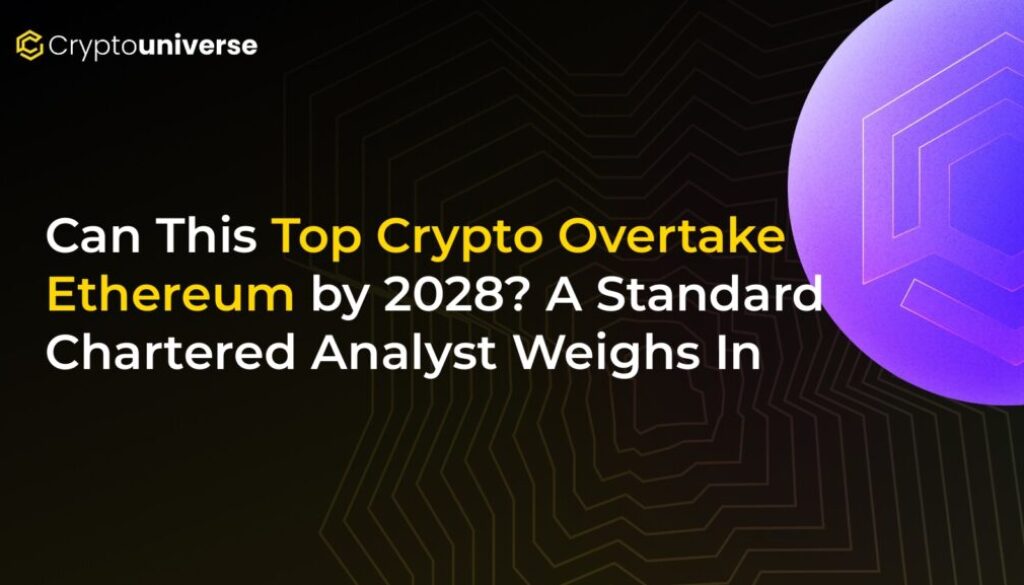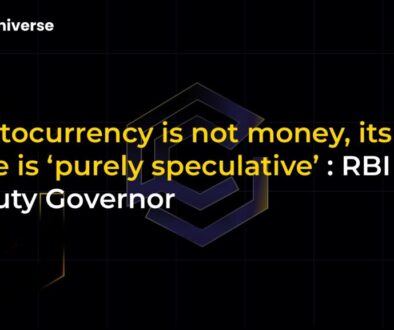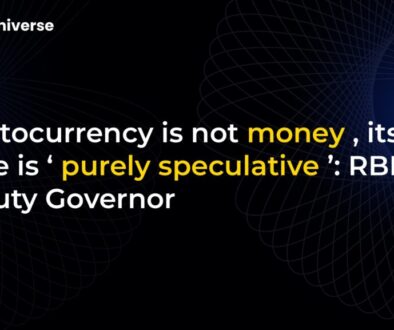Can This Top Crypto Overtake Ethereum by 2028? A Standard Chartered Analyst Weighs In

The Race for Crypto’s Silver Medal
In the vast world of cryptocurrency, Bitcoin reigns supreme with a market capitalization that dwarfs all others. But the race for the second spot is a fierce and fascinating battle. For years, Ethereum has held a firm grip on the silver medal, serving as the foundational layer for decentralized finance (DeFi), NFTs, and thousands of other applications. However, a new challenger is consistently making headlines, with a major financial institution forecasting a monumental rise.
According to Geoff Kendrick, a respected analyst at Standard Chartered, one top cryptocurrency has the potential to dramatically close the gap with Ethereum by 2028: XRP. Let’s dive into this bold prediction, explore the case for XRP, and analyze whether it truly has what it takes to challenge the king of smart contracts.
What is XRP and Why is it Different?
While many cryptocurrencies aim to be a new form of money or a platform for everything, XRP has a laser-focused mission: to revolutionize global payments. It is the native digital asset of the Ripple network, a platform designed to enable fast, cheap, and reliable cross-border transactions for banks and financial institutions.
To understand XRP’s value, it helps to compare it to the current system:
- The Old Way (SWIFT): For decades, international payments have relied on the SWIFT network. While functional, it’s often slow, taking days to settle transactions. It involves multiple intermediary banks, each taking a cut, which makes it expensive and inefficient.
- The XRP Way (Ripple): XRP acts as a “bridge currency.” A bank in the US could convert dollars into XRP, send the XRP across the Ripple network in seconds, and have a partner bank in Japan instantly convert it into Yen. This process bypasses the complex web of intermediaries, drastically cutting down on time and costs.
Unlike Ethereum, which is a decentralized supercomputer for building apps, XRP is a specialized tool designed to solve a single, trillion-dollar problem.
The Bull Case: Why Standard Chartered is Watching XRP
Geoff Kendrick’s bullish outlook isn’t based on hype alone. Several key factors contribute to the thesis that XRP could experience significant growth.
1. Fading Regulatory Uncertainty
For years, XRP was shadowed by a lawsuit from the U.S. Securities and Exchange Commission (SEC). Recent legal victories for Ripple have provided much-needed regulatory clarity in the United States, which could encourage broader adoption by risk-averse financial institutions.
2. Potential for a Spot XRP ETF
With the successful launch of Bitcoin ETFs, the crypto community is eagerly anticipating which asset will be next. An XRP Exchange-Traded Fund (ETF) would make it incredibly easy for both retail and institutional investors to gain exposure to the token, potentially unlocking a flood of new capital.
3. A Defensible Niche
While Ethereum faces intense competition from rivals like Solana, Cardano, and others in the DeFi and smart contract space, XRP’s focus on institutional payments gives it a more defined and defensible market. It’s not trying to be everything to everyone; it’s trying to be the best at one massive thing.
Unpacking the Numbers: Can XRP Really Overtake Ethereum?
Here’s where the prediction gets interesting. The headline suggests a “flippening”—an event where XRP’s market cap surpasses Ethereum’s. To assess this, we need to look at the specific price targets set by Standard Chartered’s analyst.
- Geoff Kendrick predicts XRP could reach $12.50 by 2028.
- The same analyst also predicts Ethereum could reach a staggering $25,000 by 2028.
Let’s do some rough math based on current circulating supplies (which can change). An XRP price of $12.50 would give it a market cap of roughly $690 billion. An Ethereum price of $25,000 would result in a market cap of approximately $3 trillion.
Based on the analyst’s own forecasts, while XRP is predicted to see incredible growth, it would not overtake Ethereum. Instead, the prediction points to XRP solidifying its position as a top-tier digital asset and significantly closing the valuation gap. The narrative isn’t about replacement, but about a powerful rise.
The Other Side of the Coin: Hurdles on the Road Ahead
Despite the bullish outlook, XRP faces significant challenges:
- Adoption Isn’t Guaranteed: Banks and financial institutions can use Ripple’s payment technology (RippleNet) without ever using the XRP token itself, opting for fiat transactions instead.
- Stiff Competition: The world of payments is evolving rapidly. The rise of stablecoins (like USDT and USDC) and the potential development of Central Bank Digital Currencies (CBDCs) offer alternative solutions for fast and cheap digital payments.
- Market Perception: XRP’s value is heavily tied to the success of a single company, Ripple. This centralization is a point of concern for many crypto purists who prefer the decentralized nature of networks like Bitcoin and Ethereum.
Final Thoughts: A Contender to Watch
The prediction that a
With growing regulatory clarity and a highly focused use case, XRP is undeniably a major contender in the crypto space. However, overtaking an established giant like Ethereum, which has its own massive growth predictions, remains a monumental task. Rather than a flippening, investors may be witnessing the solidification of a new pillar in the digital asset economy—one built not on DeFi or NFTs, but on the foundational rails of global finance.



